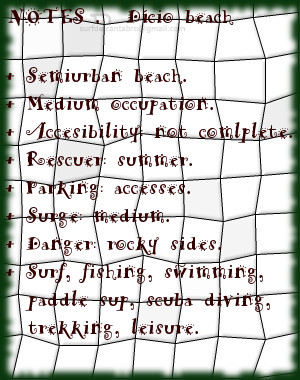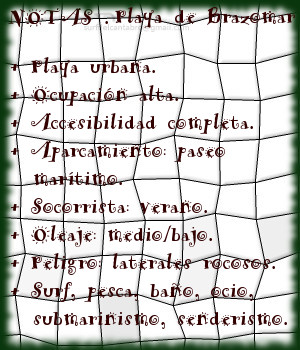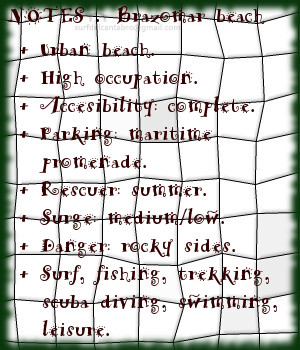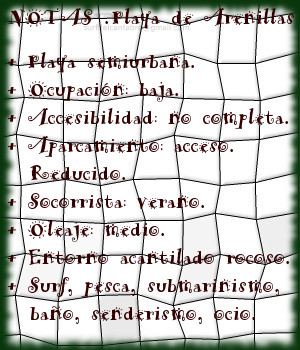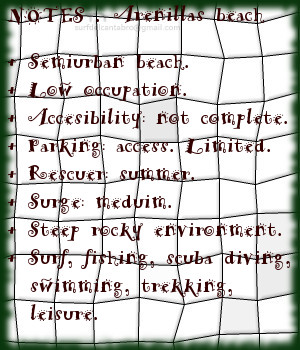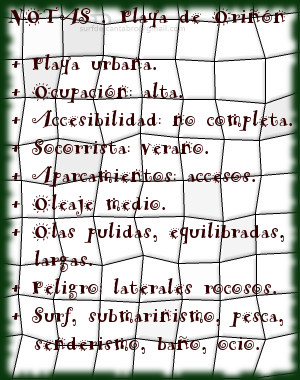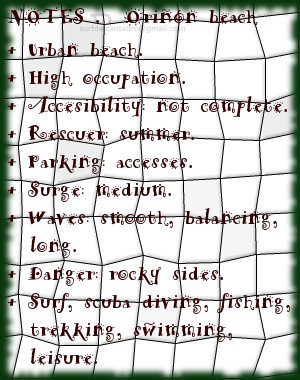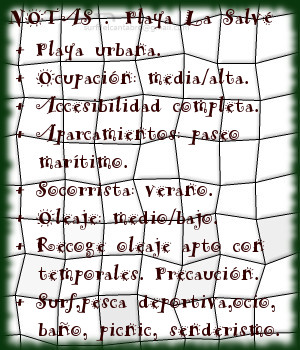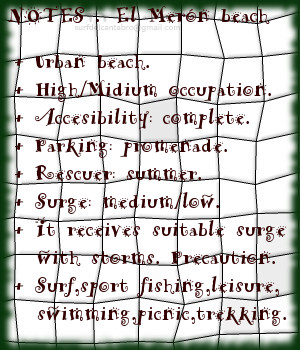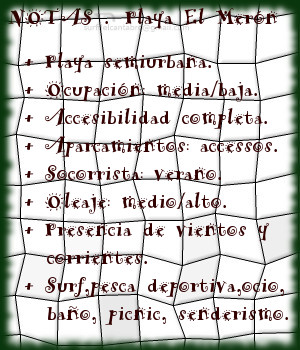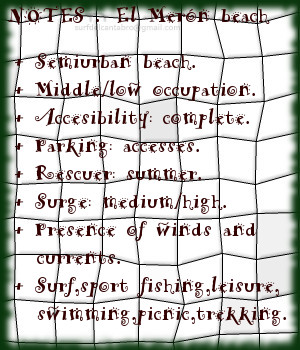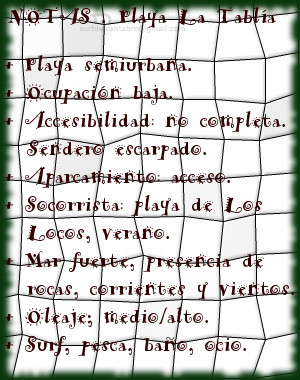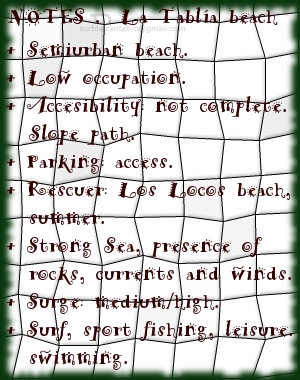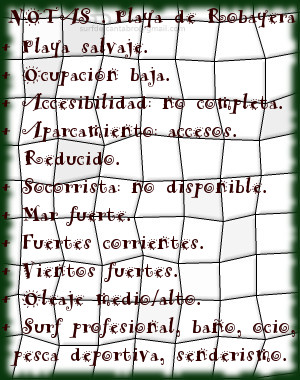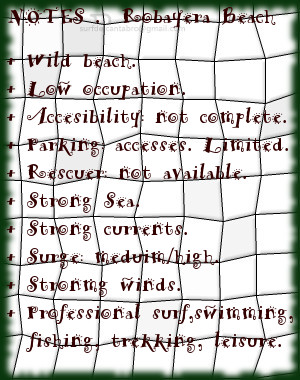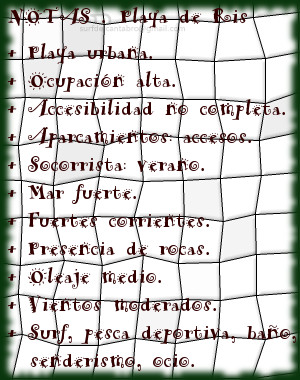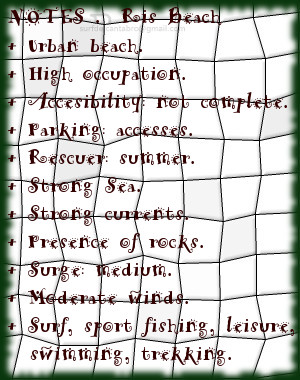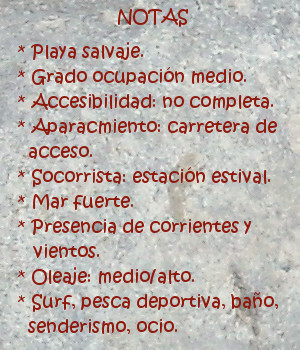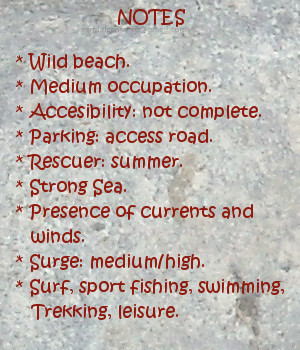Dício. Mioño, playa
![]() La playa de Dício está ubicada en la localidad de Mioño, perteneciente al municipio de Castro Urdiales, en la costa oriental de Cantabria. Su longitud de 350 metros y 40 metros de anchura media, abren la escarpada y condensada costa de Mioño al Mar Cantábrico.
La playa de Dício está ubicada en la localidad de Mioño, perteneciente al municipio de Castro Urdiales, en la costa oriental de Cantabria. Su longitud de 350 metros y 40 metros de anchura media, abren la escarpada y condensada costa de Mioño al Mar Cantábrico.
El entorno rocoso que contiene a la playa se extiende desde la Punta de Saltacaballos hasta la Punta de Mioño; próxima a Castro Urdiales. Albergando varias calas en su recorrido, es Dício la más grande de todas ellas. La desembocadura del Río Mioño da forma al litoral creando un recodo entre el arenal y la costa, parcialmente protegido por un pequeño espigón que tiene 40 metros de longitud. La carretera que da acceso a la playa se prolonga a través de un camino peatonal que llega hasta un antiguo cargadero de mineral. Este trayecto constituye un singular paseo marítimo que posibilita el descubrimiento de una parte del Mar Cantábrico nunca antes imaginada.
Las dimensiones de la playa reducen el recorrido de las ondas. Abriendo a ambos lados, favorecen las maniobras y exigen un alto nivel de surf. El oleaje en Dício registra un tamaño menor que en las playas colindantes, representando una opción cuando el estado de la mar es fuerte. Sin embargo, las características de la playa, la abundante presencia de rocas y el estado del mar en esos días, la hacen sólo apta para profesionales y surfers experimentados conscientes de los riesgos.
Las jornadas con menor tamaño descubren una zona con abundantes olas, ideales para practicar: maniobras, paddle sup… disfrutando del entorno sencillo y único de Mioño.
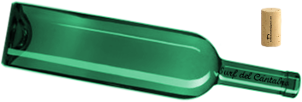
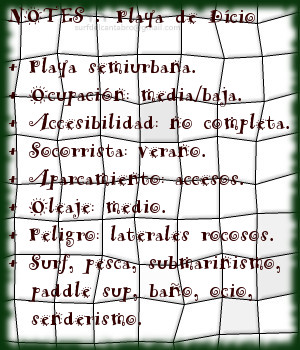
Dício. Mioño, playa
![]() The beach of Dício is located in the locality of Mioño, belonging to the municipality of Castro Urdiales, on the oriental coast of Cantabria. Its length of 350 meters and 40 meters of average width opens the steep and condensed coast of Mioño to the Cantabrian Sea.
The beach of Dício is located in the locality of Mioño, belonging to the municipality of Castro Urdiales, on the oriental coast of Cantabria. Its length of 350 meters and 40 meters of average width opens the steep and condensed coast of Mioño to the Cantabrian Sea.
The rocky environment that it contains to the beach spreads from Saltacaballos’s Tip up to Mioño’s Tip; next to Castro Urdiales. Sheltering several coves in its tour, it is Dício the biggest of them. The river mouth of the River Mioño gives form to the littoral creating a bend between the sandbank and the coast, partially protected by an small pier that has 40 meters of length. The road that leads to the beach extends across a pedestrian way that comes up to a former loading/unloading platform of mineral. This distance constitutes a singular and natural promenade that makes possible the discovery of a part of the Cantabrian Sea never before imagined.
The dimensions of the beach reduce the length of the waves. Opening to both sides, them favor the maneuvers and demand a high level of surf. The surge in Dício registers a minor size that in the adjacent beaches, representing an option when the condition of the sea is strong. Nevertheless, the characteristics of the beach, the abundant presence of rocks and the condition of the sea in these days, make it only suitable for professionals and surfers experienced conscious of the risks.
The days with minor size discover a zone with abundant waves, ideal to practise maneuvers, paddle sup … enjoying the Mioño’s simple and unique environment.

